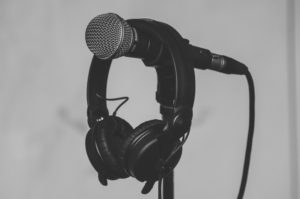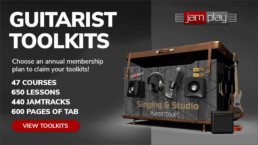JP BLOG
Share this
Contributed by: J. Bridenstine
Recording the unique warmth of an acoustic guitar can be challenging, especially if you are DIYing it at home. Sometimes the depth of sound doesn’t translate. But recording rookies may not realize that all it takes is a few extra steps to create the perfect acoustic session. If you are struggling to record your acoustic guitar playing, then these tips are a good place to start.
Set Up the Right Space
Where you record matters. Even the most cutting-edge equipment will do little in a poor location. The best rooms to record in are those with plenty of hard surfaces and few furnishings. This is why bathrooms, stairwells, and cavernous venues have great acoustics. Bathroom acoustics are particularly great because of the ceramic in the walls. You want the sound to bounce off the right places and be absorbed accordingly. However, this doesn’t mean that other spaces won’t do.
If recording at home, find a space that works by testing different areas. Do a few guitar exercises and gauge how they sound. Sometimes, even just a few feet will make a difference. Getting the acoustics right is important, as you don’t want it to be too echo-y or picking up any background noise.
Setting up acoustic treatment is also fundamental. This prevents sound from bleeding out and controls excessive reverb. If you don’t have the right space for it, set up foam or acoustic panels to help direct the sound and better allow you to capture it, which is ideal for soft instruments like an acoustic guitar.
Explore how to set up your home space with JamPlay’s free Setting the Scene video lesson from the 2021 Guitarist Toolkit: Recording Guitar at Home. Join JamPlay.com to get access to all of our Guitarist Toolkits on every topic you need to max your guitar play.
Set your home recording scene
Invest in Input Tools
To do justice to your guitar playing, consider the audio interface, cables, sound cards, and microphone. This will affect the quality of how the sound is received. If it’s not set up right, a poor audio connection can affect an otherwise great recording.
It may also help you to invest in a solid pair of headphones so you can really hear the tone that is coming through, and adjust your tuning accordingly. You’ll also want to consider the best mjc for vocals if you want to record your voice while you’re playing, and one you should certainly consider is a condenser mic.
Condenser microphones have a much clearer cardioid pick-up than dynamic microphones. It produces a brighter sound that is more accurate. You can even switch up patterns for any dynamic sound you want to  produce. If you decide to layer vocals later, these mics will be capable of doing so.
produce. If you decide to layer vocals later, these mics will be capable of doing so.
Also determine your ideal pick-up pattern. If you’re just standing still, unidirectional will do. But if you want more mobility or you’re using multiple instruments, consider omnidirectional.
Remember that if you use a condenser mic, you need a phantom power supply. If you don’t have a soundboard, you can connect it to your PC with an XLR cable.
Prep Your Audio Workstation
Technically, you can just connect directly to your computer and record. But you want the right hardware and software combination to really produce a professional acoustic guitar recording.
Get a decent DAW (Digital Audio Workstation). You don’t need to shell out for an expensive professional studio offering. But you want to get a good DAW since you’ll be mastering your final music piece. This ensures that you produce tones that aren’t muddy, crackled, or distorted. There are many options depending on your proficiency and budget. Beginners can start with free user-friendly options like Audacity (for Windows) or Garageband (for Apple).
When all is said and done, the only thing left to do is jam. You can do a few test runs to get comfortable in your setup first. Don’t be too hard on yourself and remember that this is all trial and error. Every musician likes to record differently. Soon enough you’ll begin to develop an approach that is best for you. For more tips on how to produce that perfect acoustic sound check out our post on playing with more expression.
Watch the DAW Down-Low from our Demystifying the DAW video in the Singing and Studio Essentials 2021 Guitarist Toolkit.
JamPlay is home to more than 500,000 guitarists with guitar lessons from world class instructor artists in every genre and for every interest to power up your guitar skill. Join at JamPlay.com.



Thanks! Recording acoustic guitar is a real science in itself…